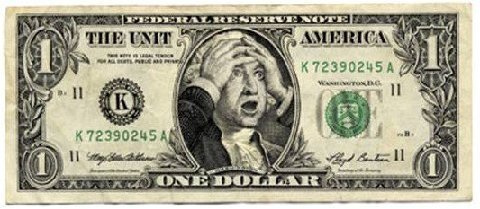Wrapping up the year in one post is tough, but let’s give it a try. Although the financial industry likes to think that the center of the universe is located somewhere between lower Manhattan and the hedge fund enclave of Greenwich, CT, most of 2013 was dominated by events in Washington DC. Fiscal Cliff: The year started with a cliffhanger Congressional vote that occurred 90 minutes after the January 1 “fiscal cliff” deadline. The agreement raised roughly $600 billion in taxes over 10 years, by increasing contributions to Social Security from 4.2 percent, back to 6.2 percent on earnings up to $113,700; and by increasing taxes for wealthy Americans.
Sequestration: The genesis of the automatic $1.2 trillion in spending cuts, known as “sequestration,” occurred in August 2011, when lawmakers were battling over raising the debt ceiling. When the “supercommittee” failed to devise an alternative to avert across-the-board cuts to defense and non-defense programs, the government was forced cut $110 billion from its budget, starting on March 1st.
Economists warned that the combination of tax increases and spending cuts would reduce growth, which is exactly what occurred. Q1 came in at a measly 1.1 percent annualized pace, but as the year advanced, things picked up. GDP advanced to 2.5 percent in Q2 and then to a sizzling 4.1 percent in the third. The economy likely expand by about 2.25 to 2.5 percent for the year, a bit ahead of the worrywart predictions, but still about one percent slower than the post-World War II average of 3.3 percent.
Bernanke’s Taper Talk: During Fed Chairman Ben Bernanke’s May 22nd testimony on Capitol Hill, he said that the central bank could taper its $85 billion monthly bond-buying program, if the economy were to perk up. The stock and bond markets fell on the suggestion that the central bank would remove stimulus from the economy, though the stock market recovered and eventually moved higher. By the time the Fed finally announced the dreaded taper at its last policy meeting of the year, investors took the news in stride and bought stocks. However, the bond market suffered a lasting blow: the yield on the 10-year treasury soared from 1.62 percent in the beginning of May to a two-year high of 3 percent and pushed down the value of bonds.
Government shutdown/Debt Ceiling: Budget fights are like clockwork, but 2013’s drama led to a partial government shutdown from Oct 1 - 16. Lawmakers finally agreed on a deal to reopen for business and to raise the debt ceiling, averting what the Treasury Department said would be an unprecedented and potentially catastrophic default.
Housing Recovery: 2013 was a big turning point for the US real estate market. The combination of low interests rates and bargain-basement prices brought big investors into the fray. The result was a 13 percent increase in home prices this year and a big uptick in activity. The pace of price gains will likely slow in 2014, due to higher mortgage rates and an increase in inventory, but single-digit increases would be increases nonetheless.
Stocks Soar: The Federal Reserve’s low interest rate policy and bond buying program made stocks the go-to asset class for investors. (See below for 2013 totals.)
First FULL WEEK of 2014: It’s back to work for Wall Street, after two consecutive holiday-shortened weeks. No time to gloat over those big gains for stocks, because this week the focus will be on Friday’s December jobs report. Economists are hoping to build on the strength of the past few months, when monthly job creation averaged over 200,000.
The economy added nearly 2.1 million jobs through November and with December expected to show an increase of about 200,000, total monthly job creation for the year is expected to be 190-195,000, a slight improvement from the 183,000 in 2012. The unemployment rate should remain at a five-year low of 7 percent. As a reminder, unemployment was at 5 percent in December 2007, the month that the Great Recession officially started. It doubled to 10 percent at the end of 2009, before starting to drop.
Investors will also eye the minutes from the Fed's December policy meeting, when the central bank announced a $10 billion reduction in monthly bond-buying. There will be interest in whether Fed officials discussed the pace of future reductions.
MARKETS 2013:
- DJIA: 16,576, up 26.5% on year (including dividends: 29.7%)
- S&P 500: 1848, up 29.6% on year (including dividends: 32.4%)
- NASDAQ: 4176, up 38.3% on year (including dividends: 40.1%)
- Nikkei 225: up 57% (remains 40% below all-time high in 1989)
- Venezuelan Stock market: up 480%, best performer worldwide
- China’s Shanghai Composite: down 6.7 percent
- Brazilian Bovespa: down 15 percent
- 10-Year Treasury yield: 3.03% (including interest: down 1.3%)
- Barclay’s US Aggregate Bond Index, down 2.02% (first decline since 1999)
- Feb Crude Oil: $98.42, up 9.3%
- Feb Gold: $1202.30, down 28.7% (first losing year in 13)
- AAA Nat'l average price for gallon of regular Gas: $3.32 (from $3.30 a year ago)
THE WEEK AHEAD:
Mon 1/6:
10:00 Factory Orders
10:00 ISM Non-Mfg Index
Tues 1/7:
8:30 International Trade
Weds 1/8:
8:15 ADP Private Sector Jobs
2:00 FOMC Minutes
3:00 Consumer Credit
Thurs 1/9:
8:30 Weekly Jobless Claims
Fri 1/10:
8:30 December Jobs Report
![Jill on Money [ Archive]](http://images.squarespace-cdn.com/content/v1/59efbd48d7bdce7ee2a7d0c4/1510342916024-TI455WZNZ88VUH2XYCA6/JOM+Blue+and+White.png?format=1500w)









